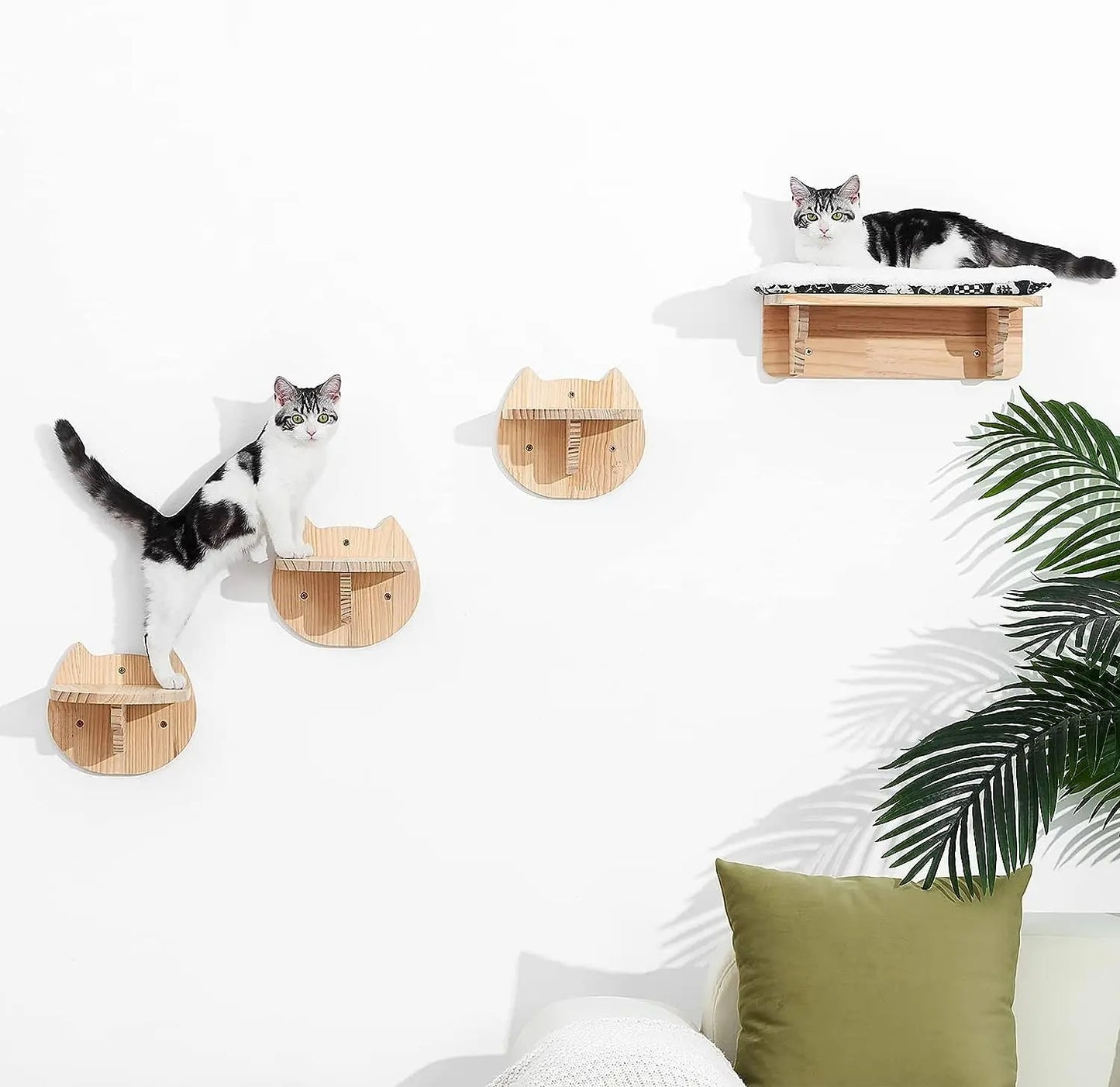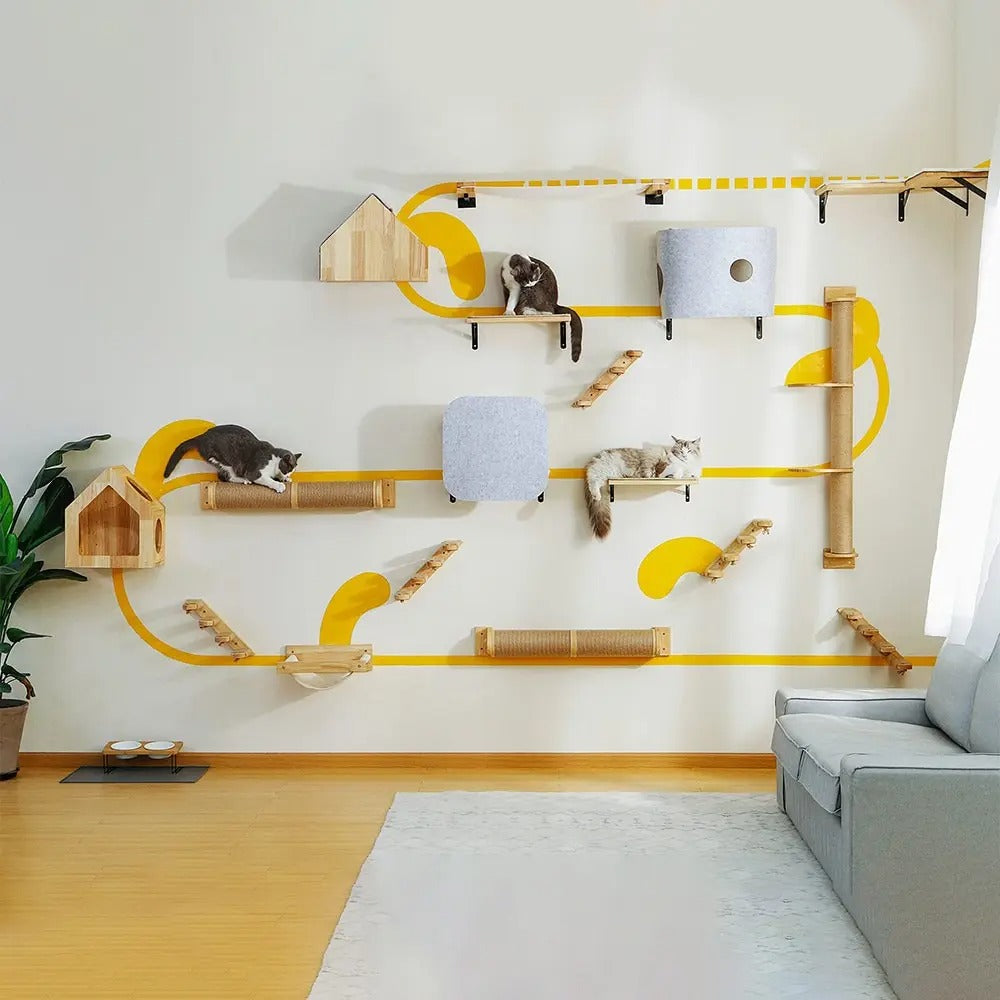Introduction
The cat tree, a now common fixture in the homes of cat lovers, has an intriguing history and has evolved significantly in design over the years. From rudimentary beginnings to the multifunctional and stylish models we see today, cat trees have developed to meet the changing needs of domestic cats and their owners. This guide will delve into the history of cat trees and explore how their design has evolved.
Early Beginnings and Historical Context
The concept of a cat tree is relatively modern, originating in the mid-20th century. However, the idea of creating vertical spaces for cats to climb and explore is deeply rooted in understanding the natural behaviors of felines.
1. Natural Instincts and Early Solutions
- Cats as Climbers: Cats are natural climbers, and historically, they would have spent much of their time in trees.
- Early Domestication: As cats became domesticated, their climbing instincts were often fulfilled by furniture and outdoor structures.
2. The 1960s: The Birth of the Modern Cat Tree
- Invention of the Cat Tree: The first commercial cat tree was patented in the USA in the 1960s by Frank Crow.
- Initial Designs: These early cat trees were basic structures, often made from wood and carpet, designed to give domestic cats a place to climb and scratch.
The Evolution of Cat Trees Through the Decades
1. 1970s to 1980s: Expansion and Popularization
- Increasing Popularity: As the pet industry grew, so did the popularity of cat trees. They began to be mass-produced.
- Design Variations: There was an expansion in designs, but they remained relatively basic, focusing on functionality rather than aesthetics.
2. 1990s to 2000s: Diversification and Innovation
- Material Innovations: Introduction of new materials like faux fur and sisal.
- Customization: The rise of customizable options allowed cat owners to tailor cat trees to their pets' needs and their home décor.
3. 2010s to Present: The Modern Cat Tree
- Stylish Designs: Modern cat trees blend with home décor, moving away from the traditional carpeted look to a more sophisticated design.
- Multi-functional Models: Recent designs focus on multi-use, with integrated feeding stations, litter boxes, and more.
- Eco-Friendly Options: Increased awareness of environmental concerns has led to the development of eco-friendly and sustainable cat trees.
The Impact of Technology and Social Media
- Online Marketplaces: The rise of e-commerce has made a wider variety of cat trees more accessible to cat owners.
- Social Media Influence: Platforms like Instagram and Pinterest have influenced the demand for more aesthetically pleasing and unique cat tree designs.
Cultural Differences in Cat Tree Design
- Western Preferences: There is a tendency towards larger, more elaborate cat trees.
- Eastern Designs: In countries like Japan, where space is often limited, cat trees tend to be more compact and space-efficient.
The Future of Cat Trees
1. Technological Integration
- Smart Cat Trees: The integration of technology for interactive play, health monitoring, and automatic feeding.
2. Sustainability and Innovation
- Eco-Friendly Materials: A continued shift towards sustainable and recycled materials.
- Innovative Designs: The rise of modular and multifunctional designs that adapt to both cat and owner needs.
Conclusion
The evolution of cat trees from simple scratching posts to complex, multifunctional structures reflects the deepening understanding of feline needs and the growing importance of pets in our lives. As we move forward, the design of cat trees is likely to continue evolving, incorporating new technologies, sustainable practices, and innovative designs to enhance the lives of cats and their owners. Discover Australia's most affordable range of premium cat trees and towers at cattreehaven.com.au where we bring joy to your feline friends with Australia's best cat trees and towers!
FAQs
Q: When did cat trees become popular?
A: Cat trees gained popularity in the 1970s and 1980s as the pet industry expanded and more people began keeping cats indoors.
Q: How have cat trees changed in design over the years?
A: Early cat trees were basic and functional, but modern designs are more aesthetic, incorporating various materials, technology, and multifunctional elements.
Q: Are there cat trees designed for specific cat behaviors?
A: Yes, contemporary cat trees are often designed with specific cat behaviors in mind, such as climbing, scratching, lounging, and playing.
The history of cat trees is a testament to our evolving relationship with domestic cats. From simple structures to the stylish and sophisticated designs of today, cat trees have continually adapted to meet the changing needs of cats and their human companions. As our understanding of feline behavior and environmental sustainability grows, so too will the design and functionality of cat trees, ensuring they remain a beloved part of a cat's life and home.



